One of the highlights of our global adventures was a hike across Nepal’s Everest Base Camp. We organized our entire year around this two-week journey since it was so essential to our group.
The hike to base camp was more difficult than we had anticipated mentally and physically, but it was worth it.
When we trekked throughout Nepal’s Himalayas and spun the prayer wheels, toured Buddhist monasteries, and got to know the extremely welcoming Nepali population, we created memories that we will cherish forever.
WHEN SHOULD YOU GO TO THE EVEREST BASE CAMP?
The two main seasons for trekking to Everest Base Camp are in the fall, between October and November, and in the spring, between April and May. The climbing season for Everest is between May and April; however, the best time to trek is during the autumn months. It’s the time of year when the sky is clear and the scenery is spectacular.
The tour was booked for the latter part of September to avoid the peak season, hoping that the monsoon would not be delayed this year.
However, the monsoon season started slightly later than usual, and we could not catch travel to Lukla on the scheduled day on the 24th of September.
We managed to catch an air flight the next day and started our trek a day late. We booked our tours through Thrillophilia and it was amazing. You can check Thrillophilia’s treks reviews online before making a booking.
DAY 1: LUKLA TO PHAKDING
FLYING TO LUKLA
Lukla is a tiny town located on a mountain and is home to an airport with one runway. The runway is very narrow and is set upwards towards the mountain to assist the aircraft arriving to slow down.
The same slope becomes an angle for planes in flight, increasing their speed and becoming more aerodynamic. The aircraft are given one shot to successfully take off; If the attempt fails, they crash to the valley below.
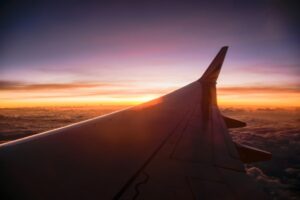
It’s safe to say that Tim, as well as I, felt anxious before the flight. Every few years, an airplane crashes in Lukla and kills all passengers.
Thankfully, our plane was safe and sound in Lukla before we started our trekking towards the Everest Base Camp trek.
Then it’s on to Lukla on a flight. The flight is short (just twelve minutes) and is less likely to be delayed or canceled due to inclement weather.
When you book your trek with the tour operator, make sure you confirm your flight’s details that connect Kathmandu to Lukla.
Lukla in the state of Lukla is where the trek starts. There was a guide named Indra who was fantastic and a porter to take our stuff for us.
In two massive duffel bags, which our porters carried, we carried sleeping bags and snacks, winter coats, additional clothing, and supplies to help us homeschool. Here, Tyler and Kara don’t get breaks!!
A majority of the supplies were either rented or purchased in Kathmandu before we started our trek. The rest was donated following the trek, as it was the only period of the entire year when we needed winter clothes.
LUKLA TO PHAKDING
- The elevation at Lukla is 2860 metres (9,383 feet)
- Phakding is 2610 metres above sea level (8,563 feet)
- 250 metres of elevation loss (820 feet)
- Distance: 7.8 kilometres (5 miles)
The first day of our hike, the easiest day of all the eleven, consisted of walking 5 miles and an overall elevation to 250m (820 feet). We were clean and fresh, energetic, and excited about the next adventure.
Every night, we were in a teahouse for the night. In essence, a teahouse is a two-star hotel. Every teahouse has an eating area where travelers consume their meals, are warm by the fireplace, and mingle with fellow travelers. There were two rooms in each location, with the majority time sharing the bathroom.
The general idea is that the further we came closer to Gorak Shep, our final destination, the more uncomfortable the accommodations. In Phakding, We were in our bathroom, which we realized quickly was an added privilege.
DAY 2: PHAKDING TO NAMCHE BAZAAR
- The elevation at Phakding 2610m (8,563 feet)
- Namche Bazaar is 3,440 metres above sea level (11,286 feet)
- The elevation gain is 830 m (2,723 feet)
- Distance: 10.4 km (6.5 miles)
The second day of the journey is often regarded as one of the most difficult. The long-distance and the immense elevation gain make the second day a challenge.
The Milk River, which starts at Everest Base Camp, was the route we traveled on our expedition. When we were walking through the valley, we passed tiny villages and cows and even porters.
The locals who live along the hiking trail are usually kind and scream “Namaste!” to everybody going by. However, Kara was able to get plenty of attention. Adults would meet Kara with smiles and chat with her, youngsters would attempt to grab their attention, and even boys of her age would stop and stare at her as she walked through.
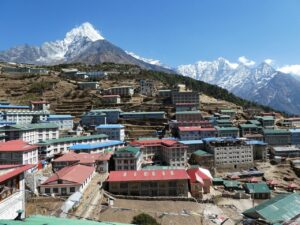
We only saw another family with similar age children throughout the 11 days we walked the trails. Tyler, as well as Kara, were rock stars in this area!
Before the big climb up to Namche, we had lunch in the tiny village of Jorsalle. There we had “dal bhat,” a traditional Nepali dish consisting of steamed rice as well as lentil soup and vegetable curry.
The Nepalis have a saying, “Dal Bhat power, 24 hours,” meaning that by eating dal, you’ll be strong enough to walk for the whole day. It’s not clear if this is correct, but it’s an extremely nutritious meal available at Everest Base Camp. The guides and porters are fed dal Bhat for three meals per day.
The true adventure began when we climbed 500 meters (1,600 feet) from the river valley to Namche Bazaar. It was a challenge! Because of the climb and the increased altitude, we had to stop and rest frequently.
Tyler was at his best endurance; his endurance is incredible. Tyler was always in front of Indra and Indra, looking back at us, wondering why it was going on that took us this long.
Then, we finally arrived (stumbled might be more accurate, I think, at least for Kara and me) Kara) to Namche. However, our work for the day wasn’t finished. Another saying says, “climb high, sleep low.” As you gain altitude, it is important to go higher than the level you’re going to rest at to prevent the effects of altitude sickness.
Because of the high heights, we’ll be passing and the growing altitude daily, altitude sickness is a serious concern when walking up to Everest Base Camp.
We each experienced a mild headache, and I would feel an occasional feeling of dizziness inside my head; however, it would go away when we ended. After this, our trek will be over since we’d need to lower to a lower elevation.
DAY 3: ACCLIMATIZATION DAY
We made an enormous elevation gain the previous day (800 meters). Our bodies required an entire day to get used to the elevation change before going to bed higher. Before the noon clouds rolled in, Indra made us get up early for our first dawn views of Mt Everest.
Being able to view Everest was a once-in-a-lifetime opportunity. To the distance, we were nearly hidden by Lhotse and the round peak of Everest. We’ll be seeing a lot of Everest over the next few days, but the first view was awe-inspiring.
To acclimatize ourselves today, we climbed 300m to reach Khumjung town. Khumjung. We went to a local school for lunch as well as the monastery.
DAY 4: NAMCHE TO TENGBOCHE
- Namche is 3440 metres above sea level (11,286 feet)
- The elevation at Tengboche at Tengboche: 3,870m (12,664 feet)
- Elevation Gain: 430 m (1,378 feet)
- Distance 9.9 km (5.6 miles)
Each day we woke up in bed by 6 am to pack the sleeping bag and equipment before getting dressed and eating breakfast. Tim and I shower every 3-4 days, and it costs between $4 and $5 to get an energizing shower. I no longer wore makeup, and I usually was wearing my hair down, which meant I could be ready in 5 minutes.
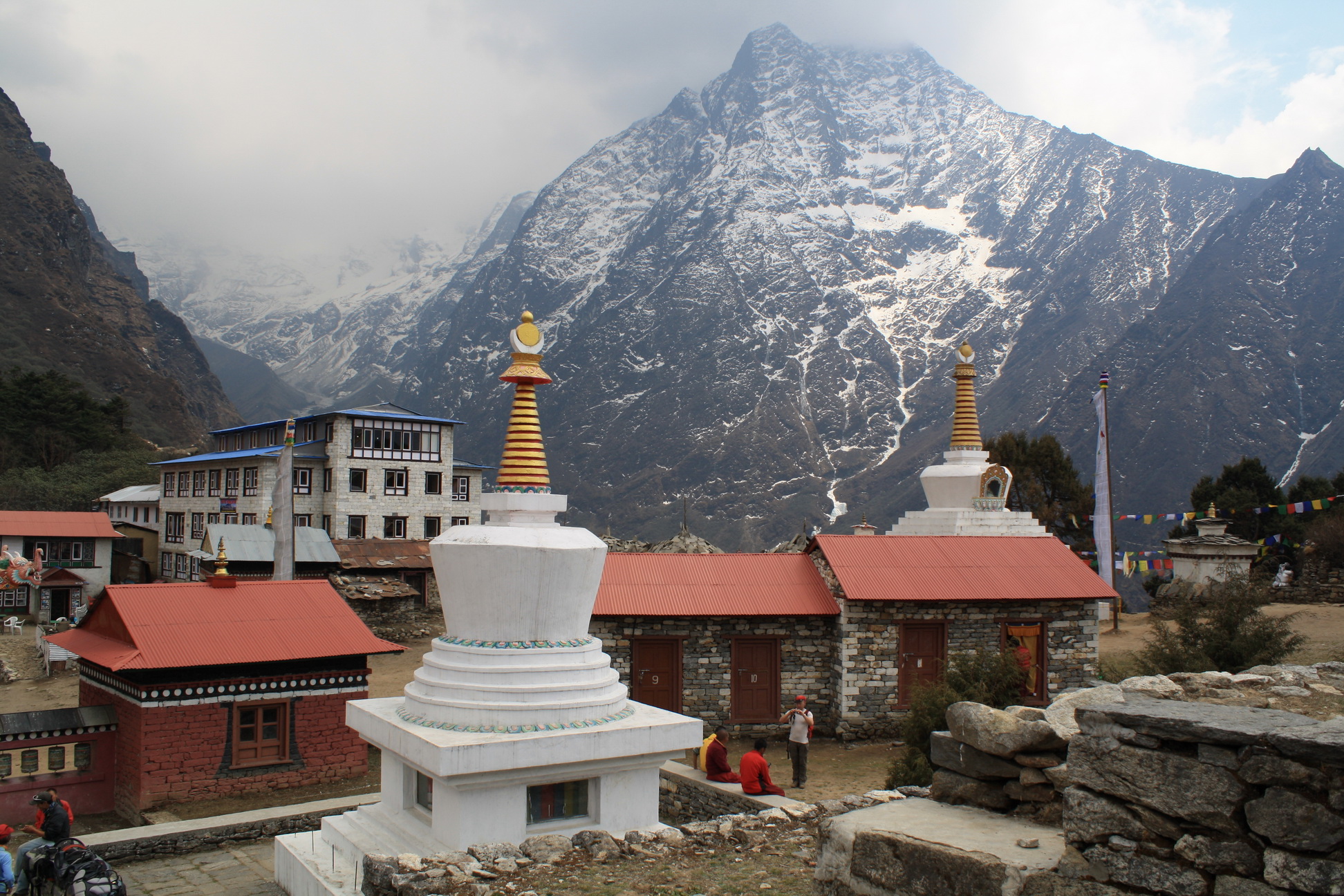
Today, we had another tiring day ahead, six miles of hiking and the possibility of climbing 430 meters. The views at first were spectacular.
We were in the upper part of the river valley, and far away, we could observe The Himalayas and Tengboche situated on the top of a hill. We walked through many Buddhist stupas.
The Buddhist shrines make the trek more interesting; if Everest is off in the distance, it wasn’t intriguing enough.
THE OBJECTIVES ON THE TRAIL
We spotted porters bringing their merchandise to Everest Base Camp along the road. Yaks or porters transported all the goods delivered outside of Namche. We saw people carrying food, beer cases, soda bottles, doorways, furniture, pans and pots, clothes, and much more. Construction materials were all transported uphill by these guys.
They lugged the burden on their backs, with straps over their brows to assist distribute the weight. These guys were fantastic. They carried hundreds of pounds on these extremely steep, rock-strewn slopes and were moving in the same direction as that we did.
What we found to be troubling were the baskets full of meat. Massive chunks of meat, cut into Namche or Lukla, were transported across the trails to higher towns. The meat sat outside and was not refrigerated. It could take days to get the meat to its destination. In Namche, following the recommendation of Indra, our family, we became vegetarians.
The majority of electricity north of Namche is generated through wind, water, or even the sun. Thus, our access to electricity was quite restricted. It cost us several dollars to charge our gadgets, but it could only be done when the teahouse was powered up.
As we moved towards the north, the nights became significantly colder, which meant that the dining room in the teahouse was kept warm with the central fireplace.
The teahouse used yak dung patties as fuel instead of wood. These were disks made of the yak’s dung, which were formed by hand and dried on the stone walls.
We finally reached Tengboche, the place I consider my top destination on the trek. I was in awe of the Buddhist monastery that we missed and the warm and welcoming dining room in the teahouse. And enjoyed some delicious meals here.
After our acclimatization hike, our kids went to school for a bit of homework, Tim and I had a drink with fellow trekkers, we had dinner. Tyler and Kara, Indra, and other of our new friends joined us in playing cards. These evenings were some of my most memorable experiences of the trek.
DAY 5: TENGBOCHE TO DINGBOCHE
- Tengboche is 3800 metres above sea level (12,664 feet)
- Dingboche is 4410 metres above sea level (14,469 feet)
- Gain in altitude: 540 metres (1,505 feet)
- Distance: 10.7 kilometres (6.6 miles)
After breakfast of porridge, toast, potatoes, toast, and coffee, it headed for the airport.

The day started with great energy, but it didn’t take long to feel exhausted. After climbing 4000 meters (13,100 meters), the air was suffocating hard and felt sluggish.
The trek was beginning to exhaust us! It’s also colder now as temperatures are in the upper 40s, so it was necessary to put on many layers. Sometimes even gloves and hats were needed.
After lunch, our climb up to Dingboche continued. We had to ascend 540 meters (1,500 feet) from Tengboche to Dingboche, which was becoming difficult at this altitude.
Walking had started to seem like a grind. Our heavy, plodding steps were the result of our exhaustion. It seemed like we were walking on sand.
We had to struggle for air because of the little slopes. It was exhausting to climb steep slopes. It felt as though I were running the final mile of a marathon. It needed a lot of willpower to keep going.
Tyler and Kara were going well. When we saw trekkers going in the opposite direction, they were ecstatic to see a young child doing this kind of trek.
The kids received lots of compliments, praise, and even encouragement. I’m sure this helped Tyler and Kara to feel more at ease. This was a really difficult task they had to complete in the past. Tim and I both think they’re amazing!
When we arrived at Dingboche, we were exhausted. Tim and Kara had moderate headaches, which they managed by drinking a lot of water. After our hike to acclimatize them, they were much better.
DAY 6: ACCLIMATIZATION DAY
We’re now at 4410m (14,500 feet). It is essential to go up to a higher altitude every day to stay healthy and adjust to the altitude; however, it was the 6th day of the trek, and we all felt tired. Day after day of hiking was beginning to exhaust us, and we were desperate for a relaxing day.
The acclimatization hike today took us three hours in total, including the tiny village of Chhukhung to an elevation gain of 300m. We were walking on our feet for the whole time.
As we moved further north, the accommodations became much worse. The structures are built with only the most basic of materials: walls made of wood and doors and windows made of plywood that doesn’t fully close and doors that had to be shut. It’s very easy to listen to every phrase that the neighbors are talking about.
The bathrooms are turning into something from the pages of a horror movie. When twenty people share a bathroom that doesn’t flush, it’s easy to imagine how filthy the conditions can get.
DAY 7: DINGBOCHE TO LOBUCHE
- The elevation at Dingboche 4410m (14,469 feet)
- Lobuche is 4.940 metres above sea level (16,207 feet)
- Gain in altitude: 533 metres (1,738 feet)
- Route: 9.7 kilometres (6 miles)
Today we hiked around six miles, between Dingboche to Lobuche and back, climbing an additional 500m. We hiked uphill from Dingboche before slowly climbing up the hill, overlooking the Milk River once more. The views were spectacular snowy mountains with the rocky Himalayas surrounding us.
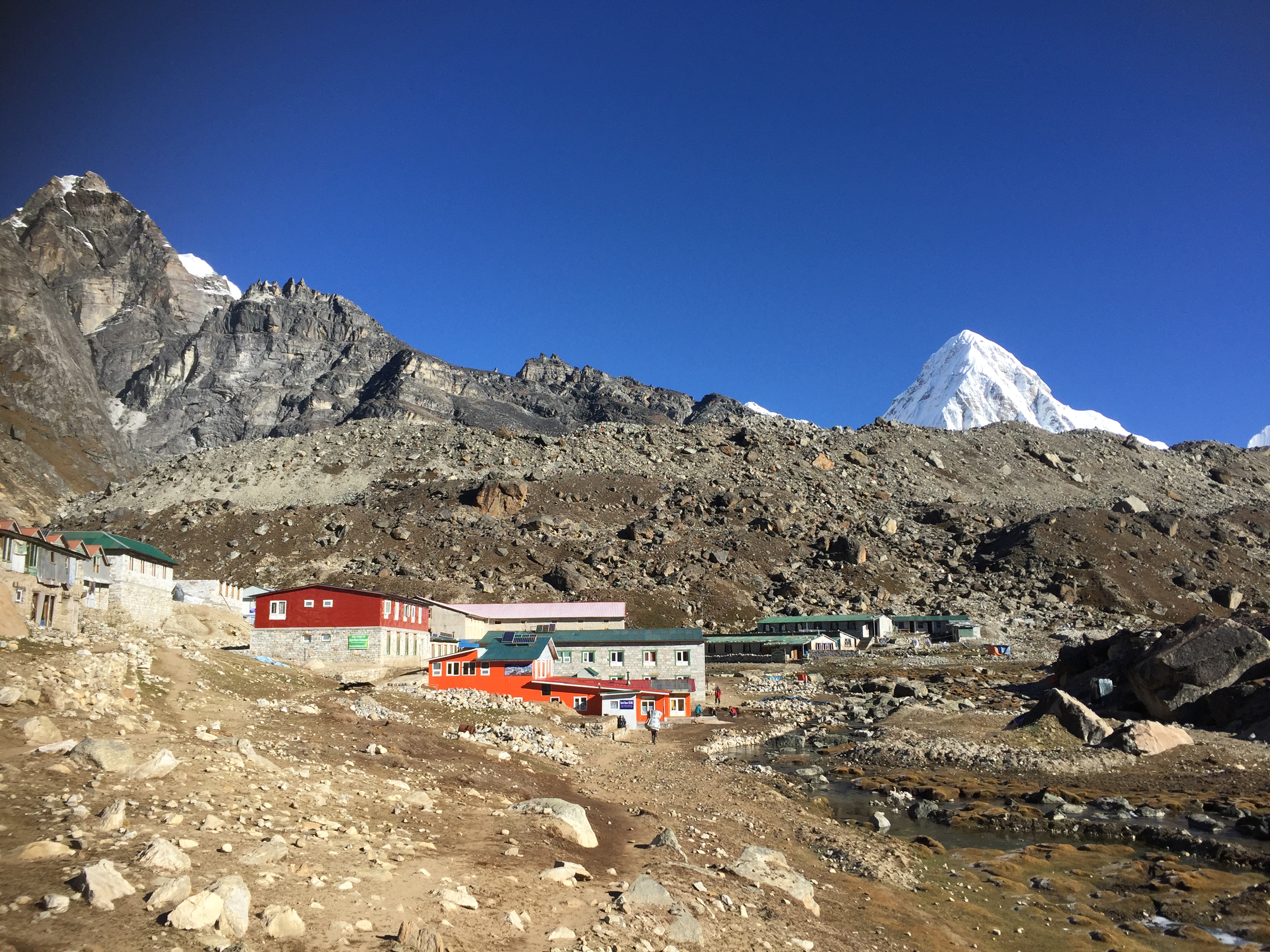
There was one final climb before reaching Lobuche. It was a rocky, steep climb that brought us to our highest point yet. We were always exhausted despite climbing at a snail’s speed.
We finally arrived in the small town of Lobuche just four hours after we left Dingboche, and you could count the number of buildings in the town on two hands. We would be here for a night.
We were walking around with steady fatigue and headaches of a low grade. We were at 4900m (16,100 feet), and even just lying down on our beds left us feeling exhausted.
The amount of work necessary to ascend a flight of stairs astounded me! We were looking forward to returning to Lukla, but we didn’t leave until two days later.
The temperatures in the rooms of the teahouse would drop to the upper 30s by evening. We could stay cozy in the comfort of our sleeping bags; however, it was difficult to get up and get dressed the next day!
DAY 8: GORAK SHEP TO EVEREST BASE CAMP FROM LOBUCHE
- Lobuche is 494 metres above sea level (16,207 feet)
- Gorak Shep is located at a height of 5,164 metres (16,942 meters)
- Everest Base Camp is located at a height of 5,380 metres (17,600 feet)
- Elevation Gain: 440 m (1,393 feet)
- Distance: 11.3 km (7 miles)
Today we will be able to see Everest Base Camp! This was an arduous and steady climb most of the route between Lobuche towards Gorak Shep. The hike today was not too lengthy, at most three miles. But the altitude was causing us to move slowly.
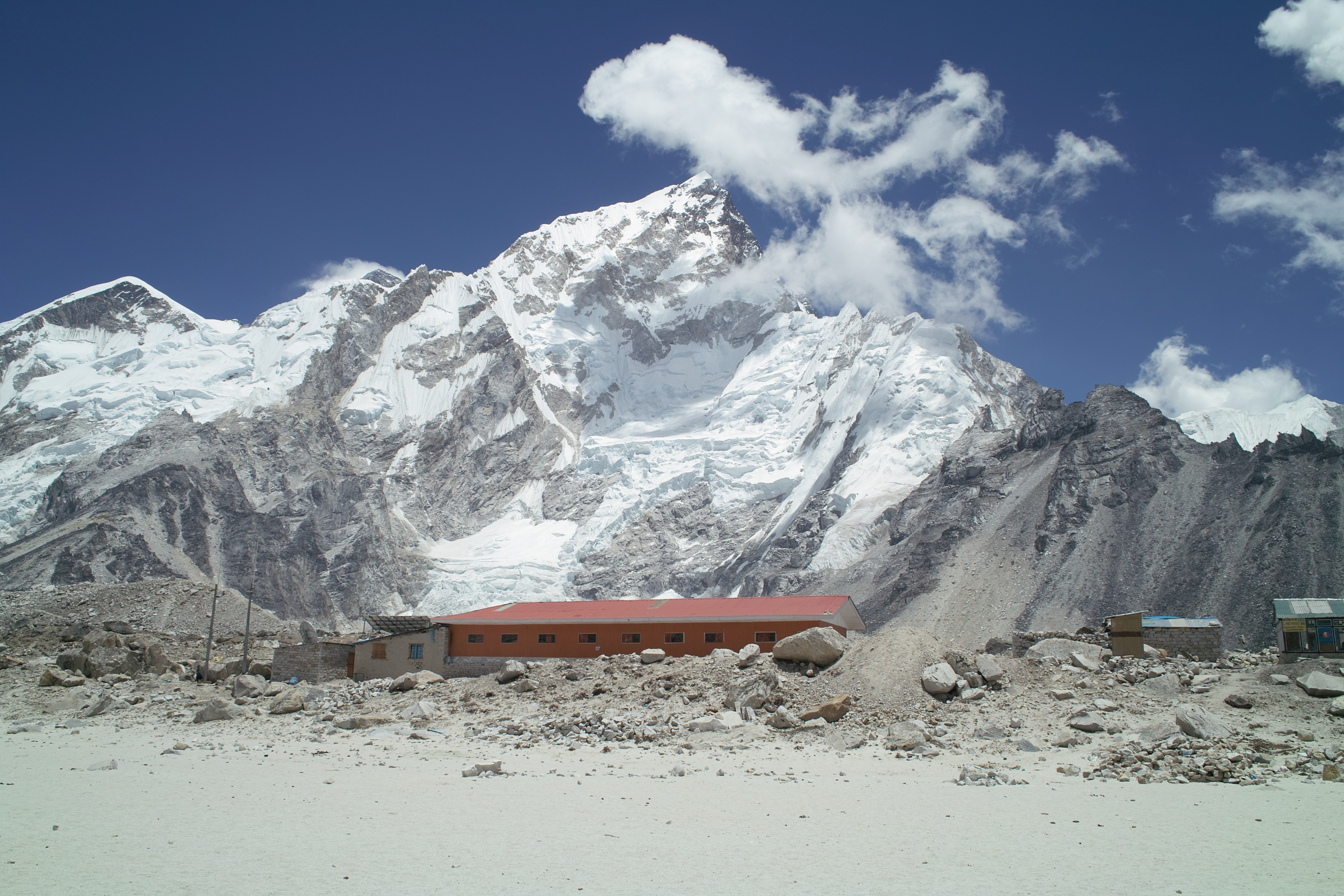
The view was beautiful, tall, and rocky mountains were all around us. The hike ended with the climb and descent of difficult hills. At this point, we were physically exhausted from the climbing!
Then, we reached Gorak Shep, the most northern point on our journey up to Everest Base Camp.
After the light meal of rice and soup, we were ready to hike up to Everest Base Camp. We were almost there! However, Indra predicted that it would take us 3 hours to get to Gorak Shep. We were completely spent.
We were covered in winter coats, caps, and gloves. As usual, we hiked through rocky hills. The trek was north on the Khumbu Glacier.
From a distance, we could glimpse Everest Base Camp. It was not too distant; however, We were wedged from the base camp by numerous mountains of boulders and rocks.
The same theme continued uphill ascents, even the smallest ones, which made us fight for oxygen. We were at 17,000 feet and breathing air with 51 percent oxygen. We were feeling slow and sluggish, and I experienced a much more severe than usual headache. Tyler began to slow down.
After nearly two hours of walking and climbing, we reached the top of the huge mountain of boulders and finally reached Everest Base Camp!
It felt a bit odd to arrive at Everest Base Camp. It was a swath of rocks with an Everest Base Camp sign, as well as a multitude of prayer flags. There was no big sign, and there were no tents, but the trekkers we met as well as an icefall. Khumbu IceFall disappears in the far distance.
We were happy with the results. I am also extremely satisfied with Tyler as well as Kara for completing this trek.
It was now snowing, and the temperature was dropping. We took some photos, hung an eagle flag, and left quickly.
DAY 9: KALA PATTHAR AND THE TREK TO PANGBOCHE
- Gorak Shep is 5,164 metres above sea level (16,942 meters)
- The elevation of Kala Patthar: 5,545 metres (18,514 feet)
Mt Everest is not visible in the distance of Gorak Shep or Base Camp because Lhotse, the Lhotse mountain, is directly just in front of it. The peak of Kala Patthar, a lower mountain near Gorak Shep, offers one of the most breathtaking views of Everest.

Most people rise at 3:00 am to climb to Kala Patthar to observe the dawn on Mt Everest. Tim and Tyler decided to go up.
Kara was not sure she would be able to make it (a 500-meter climb); therefore, she and I decided to stay in the teahouse.
In the evening, the bunch of Nepali men, who were staying in our adjacent room to sleep in, went to bed at 11 pm drunk, drinking, vomiting in the hall, and extremely loud.
We had a very short sleep, and it was not a good night for the boys who got an early wake-up to get up.
Around 4 am, Tim and Tyler, dressed in all their gear, set out into the dark along with Indra to climb Kala Patthar.
Soon after, at 5:30 am, which was well before dawn, I heard a panicked knock at my door, and Tim shouted at me that Tyler was suffering from altitude sickness.
This was quite shocking since Tyler has always felt the best throughout the entire journey. He was already feeling a lot better.
Evidently, near the top in Kala Patthar, Tyler was beginning to feel all the typical manifestations of altitude sickness, including extreme fatigue, nausea, dizziness, dizziness, vomiting, and sensations of tingling throughout.
Indra took Tyler and pushed down the mountain together with Tim close behind them to clear the path of others climbing. At the point that Tyler reached the bottom, He was feeling much better. The fastest way to recover from altitude sickness is to descend quickly.

It was astonishing how it felt to be feeling much better as we walked back into these mountains.
Tyler was able to walk back down the mountain after sleeping through the night and suffering from altitude sickness, stating that it felt as if he had an inner fire burning within his body and that he was able to walk for miles back to Lukla.
On our first day of descending to the valley, we walked about one-third of the distance and spent our night at Pangboche.
In the distance from Gorak Shep to Pangboche, we took a hike of 17.6 kilometers (11 miles) and then descended 1300 feet (4000 to 4000 feet).
DAY 10: PANGBOCHE TO NAMCHE BAZAAR
- Loss of elevation: 545 metres (1,788 feet)
- Distance Distance: 12km (7.5 miles)
The eight-day time frame to climb took just three days for descent. Our speedy pace continued as we walked at an average of 7 to 11 miles each day.
We were so happy to head towards Lukla. With our headaches gone and we were energized once more, hiking became much easier.
DAY 11: NAMCHE TO LUKLA
- 580 metres of elevation loss (1,903 feet)
- Distance: 18.2 kilometres (11.3 miles)
The trek between Namche towards Lukla took us seven hours, and we had an additional hour to eat dinner in Phakding. Since we were at an elevation lower, the temperatures were higher, and it was more humid.
Then, we reached Lukla. I was thinking there should be an end in the distance, crowds cheering and people giving out Gatorade. It felt like we’d have just completed an extremely exhausting race. We were all exhausted, even Indra.
In a bid not to get the same-day flights to Kathmandu, we stayed one overnight in Lukla. We were now in two rooms. Each included a bathroom that had a sink, toilet that flushed, and hot showers that we didn’t need the money to purchase. It was like a luxurious experience!!
DAY 12: FLY TO KATHMANDU

We took a flight the next morning into Kathmandu, and our incredible adventure officially ended.
IN CONCLUSION
The hike up to the Himalayas, taking fresh, cool air, and observing amazing views was truly amazing. I am extremely happy for our family to have gotten to Everest Base Camp together.
The journey was physically demanding, and Tim and I have both competed in Ironman races, so we know what it’s like to be physically challenged.
In some respects, trekking to Everest Base Camp is more taxing than completing an Ironman. There’s something in the physical exertion required with such low oxygen levels that makes us tired in ways we’ve not had before. This is why getting up to Everest Base Camp is such an achievement, especially for children between the ages of 10 and 11 years old.
Tyler and Kara have a hard time coping with the guide we had, Indra, with whom we had a great time throughout our 11 days of hiking towards Everest Base Camp. Indra took excellent treatment of our needs, instructed us about the mountain ranges and towns throughout the trek, and, of course, saved Tyler from Kala Patthar. He was a great guide, and we feel grateful to have had this trip with Indra.
I’m pleased that the four of us worked together to finish this.


